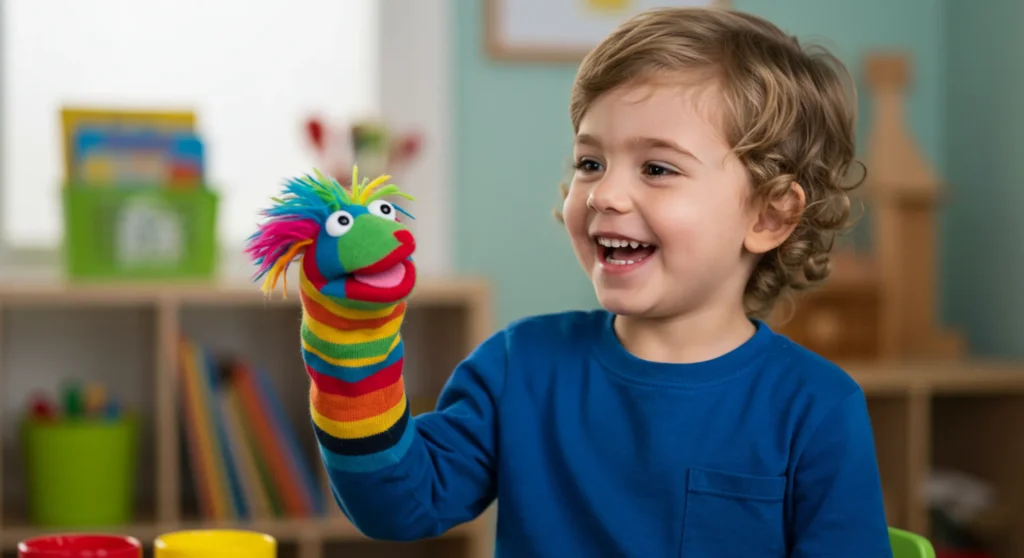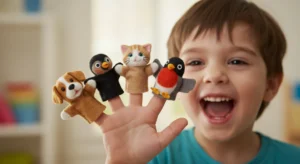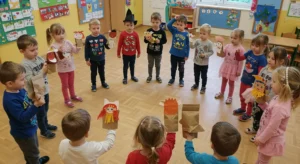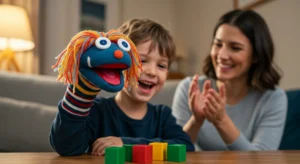Language is one of the most important skills your preschooler will develop during early childhood. While books and songs are excellent tools, one of the most fun and effective ways to nurture communication is through storytelling with puppets for preschoolers. Puppets bring characters to life, spark imagination, and create interactive opportunities for your child to express themselves in new ways.
In this article, we’ll explore why storytelling with puppets is so powerful, share ideas for using them at home, and highlight how these playful tools can boost confidence, vocabulary, and creativity. If you’re looking for an enjoyable activity that combines fun and learning, puppets may be just what your preschooler needs.
Why Storytelling Matters in Early Childhood
Stories are how children make sense of the world. Whether told through books, play, or conversation, storytelling builds connections and strengthens memory. For preschoolers, stories are not only entertaining — they are also educational. Here’s why:
- Language Development: Storytelling introduces new words and helps children practice sentence structure.
- Listening Skills: Following a story improves focus and attention span.
- Imagination: Creative narratives encourage children to dream, pretend, and innovate.
- Social-Emotional Growth: Characters in stories model problem-solving, empathy, and friendship.
As shared in The Importance of Play in Preschool Development, children learn best through play. Storytelling is a natural extension of that playful learning.
Why Puppets Are So Effective
Puppets add a special layer of excitement to storytelling. They act as “playful teachers,” encouraging children to participate and respond. Here’s why puppets are particularly effective for preschool learning:
- Engagement: Puppets capture children’s attention with movement, color, and expression.
- Confidence: Shy children often find it easier to speak through a puppet than in their own voice.
- Role Play: Puppets encourage children to act out scenarios, strengthening social and emotional understanding.
- Interactive Learning: Asking questions through a puppet makes children more likely to respond and join the conversation.
Puppets also make learning fun for parents! Even simple homemade puppets can turn bedtime stories or afternoon play into unforgettable learning opportunities.
Types of Puppets You Can Use
1. Sock Puppets
A classic choice! Use old socks, buttons, and fabric scraps to make silly characters. Let your child decorate their own puppet, which adds creativity and ownership to the activity. For more DIY inspiration, see Simple and Effective Preschool Crafts You Can Do Together.
2. Paper Bag Puppets
These are inexpensive and easy to create. Draw faces on lunch bags or glue on shapes to create animals or people. Paper bag puppets are perfect for group storytelling with multiple characters.
3. Finger Puppets
Small and portable, finger puppets allow for quick play. You can buy sets or make your own with felt and glue. They’re perfect for singing songs or acting out short rhymes.
4. Shadow Puppets
Cut simple shapes out of cardboard and attach them to sticks. Use a flashlight or lamp to create shadows on a wall. This adds a magical effect to storytelling and introduces science concepts like light and shadow.
Fun Puppet Storytelling Ideas
1. Everyday Stories
Use puppets to act out simple daily routines like brushing teeth, getting dressed, or cooking. This helps preschoolers understand sequencing and reinforces healthy habits.
2. Classic Tales
Recreate well-known fairy tales or nursery rhymes with puppets. Stories like “The Three Little Pigs” or “Goldilocks and the Three Bears” are fun to retell and easy for preschoolers to follow.
3. Make-Believe Adventures
Encourage your child to invent their own characters and storylines. Maybe their puppet is an astronaut exploring space or a chef making silly meals. This boosts imagination and creativity.
4. Emotion Exploration
Use puppets to talk about feelings. A puppet might say, “I feel sad because my toy broke,” and you can ask your child how to help. This builds empathy and emotional vocabulary.
Tips for Parents to Maximize Learning
- Model Storytelling: Show your child how to tell a story, then let them take the lead.
- Encourage Interaction: Ask your child questions through the puppet. For example, “What should I do next?”
- Connect Stories to Real Life: If your puppet talks about planting seeds, follow up with a gardening activity outdoors. See 10 Fun and Easy Preschool Activities to Do at Home for ideas to extend learning.
- Keep it Simple: Short stories with clear beginnings, middles, and endings work best for preschoolers.
Learning Benefits of Storytelling with Puppets
Using puppets for storytelling combines fun with meaningful learning outcomes:
- Vocabulary Growth: New words are easier to remember when introduced in a playful story.
- Public Speaking: Puppets encourage children to “perform” in front of others, boosting confidence.
- Cognitive Development: Storytelling builds memory, sequencing skills, and problem-solving.
- Bonding: Puppet play strengthens the parent-child relationship by creating joyful shared experiences.
According to Reading Rockets, storytelling with puppets helps children become more active participants in literacy activities, which leads to stronger communication and comprehension skills.
How to Get Started
You don’t need a large budget or special training to start storytelling with puppets. Here are a few steps to help you begin:
- Start with one or two puppets and simple storylines.
- Encourage your preschooler to help make puppets with craft materials.
- Set aside a regular “puppet time” each week to build routine and excitement.
- Use puppets during transitions — like bedtime or quiet time — to make routines smoother.
If you want to create a supportive learning space at home, see How to Create a Stimulating Learning Environment for Your Preschooler.
Final Thoughts
Storytelling with puppets for preschoolers is more than just a playful activity — it’s a powerful way to boost language, spark creativity, and nurture confidence. Whether you use a sock puppet, a paper bag, or a shadow puppet, the magic lies in the interaction and imagination that comes alive during story time.
Puppets give children a voice, encourage them to express emotions, and make learning joyful. As parents, we don’t need to be perfect storytellers — what matters most is that we create moments of connection, laughter, and growth with our little ones. So, grab a puppet, let your imagination run wild, and watch your preschooler’s language skills flourish.




